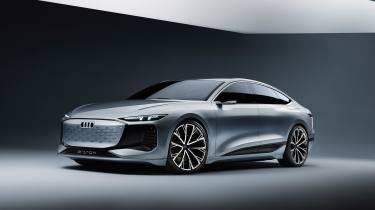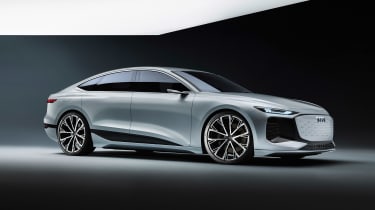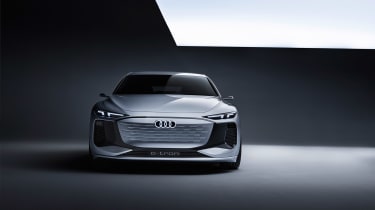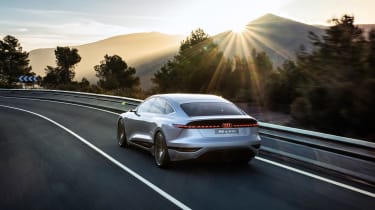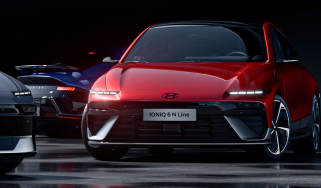Audi A6 e-tron Concept previews new electric saloon
A6 e-tron Concept also debuts new PPE chassis co-developed by Audi and Porsche
Audi has revealed the A6 e-tron Concept in Shanghai, previewing a production A6 e-tron due to be shown in late 2022. The Concept is a big one for Audi for numerous reasons – it doesn’t just introduce a new model, it’s also the first application of Audi’s new PPE platform, a new all-electric modular hardware set co-developed with Porsche.
Yet beyond its sleek body and new tech, the A6 e-tron also gives us a look ahead at how Audi plans to integrate its new electric models into the range and how, like Mercedes-Benz, it looks to be on an ambitious path ahead.
The A6 e-tron Concept
According to Audi the A6 e-tron Concept is about 90 per cent production accurate, with the body, its proportions and underlying aesthetic to largely be carried across wholesale. Only details such as the door mirrors, wheels and lighting will be changed for production.
The body itself is a touch longer than that of the current A6 at 4.96m, but is a substantial 74mm wider overall. The biggest variance, dimensionally, between new-age electric cars and their petrol-powered counterparts is a long wheelbase in relation to their overall length – something clearly visible. As a result, the A6 e-tron’s proportions are obviously derived from an electric platform, overlaid with short overhangs and a cab-forward stance.
The Concept is powered by two electric motors – one on each axle – and generates equivalent peaks of 450bhp and 590lb ft of torque. Audi has confirmed the Concept’s battery capacity at 100kWh, and is targeting a 430-mile or more range for production.
Given this is not an Audi Sport model, outright Tesla-beating range is expected to come at the expense of performance, but the most potent of A6 e-tron variants will still hit 62mph in under four seconds.
Charging capability is based on that found in the e-tron GT, with an 800V system and up to 270kW fast charging. Audi claims that at full charging speed the A6 e-tron will be able to add up to 186 miles of range in just ten minutes, or do a full five to 80 per cent charge in less than 25.
The suspension layout comprises a bespoke five-link front end designed specifically for the PPE platform, with a multi-link rear axle and air springs with adaptive dampers at all four corners.
The production A6 e-tron will join the range in early 2023, a few months after Audi’s first PPE model, the Q6 e-tron SUV. It will sit alongside the current A6, running parallel to its model cycles. This is a similar structure to the one Mercedes is employing with its EQ range, with distinctive bespoke EV models due to sit alongside its legacy model lines. BMW, by contrast, plans to largely amalgamate its EV models into their existing lines, as seen in models like the i4 and iX3.
What else PPE will underpin
PPE is planned to underpin everything in the B (small), C (medium) and D (large) segments, including saloons, SUVs, crossovers and even future sports models. Audi Sport, which was involved with the e-tron GT built on the J1 platform, has not been included in the pre-development of this platform, but will likely get involved once the development of future PPE-based RS models begins.
Just like J1 and MEB, PPE will be strictly EV, and is not able to integrate any form of combustion engine – even a small range extender. The key difference between PPE and Porsche’s J1 platform is, put simply, size. The J1 is inherently lower and smaller, with close ties to the 911 around the scuttle and front subframe that limits its ultimate modularity.
By contrast, PPE will have almost no limits to its modularity, according to Audi’s engineers, with the ability to move key hard points such as the scuttle height, dash-to-axle ratio, wheelbases, and track widths to accommodate models of all shapes and sizes.

